#Coastal Engineering
Explore tagged Tumblr posts
Text


Breakwater in St Malo, Bretagne. Made of thousands of oak trees stuck in the sand in front of the ramparts, and eroded over the years.
4 notes
·
View notes
Photo
To the best of my understanding (I'm no harbormaster, but I vaguely remember some hydraulic engineering classes from college, and I just now discovered CoastalWiki.org): wharves, quays, jetties, and piers are all used for unloading ships. A similar structure not used for unloading ships (and thus usually not walkable on top), but rather to control coastal erosion and/or partially enclose and protect a harbor, would be a breakwater.

You're probably familiar with the idea of a seawall, which is a type of breakwater that is typically built parallel to a shoreline, right at the land-water interface, or possibly above a beach. They're typically constructed of stone or concrete blocks, poured concrete, interlocking concrete blocks such as tetrapods, riprap, sandbags, gabions, etc.

A groyne is a type of breakwater that typically extends straight out from shore, and is often but not always constructed of wood.

A mole is another type of breakwater that can extend straight out from shore, but can also curve around to parallel the shoreline. A mole is typically constructed of fill.

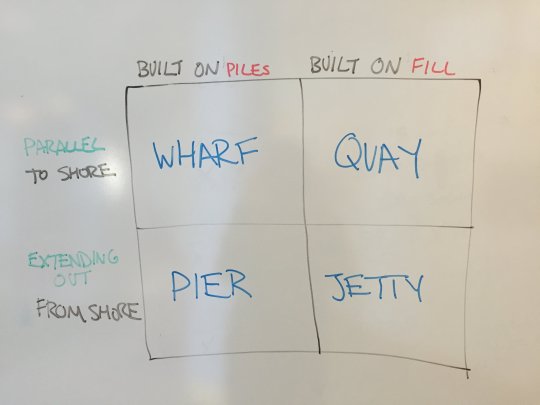
In case you’ve ever been confused which is which.
TIL: the difference between a wharf, a pier, a jetty and a quay (reading about the history of the port of San Francisco on a Friday night).
— Deb Chachra (@debcha) April 9, 2016
15K notes
·
View notes
Text
What is the difference between ocean and coastal engineering?
Ocean engineering and coastal engineering are both specialized fields within civil and environmental engineering that focus on different aspects of marine environments. Here are the key differences between the two:
**Ocean Engineering**

1.Scope:
Broad Focus- Ocean engineering covers a wide range of activities and technologies related to the exploration, utilization, and protection of the ocean.
Deep Water- Primarily concerned with deep-water environments, beyond the immediate coastal areas.
2. Key Areas of Study:
Marine Structures- Design and construction of offshore platforms, underwater pipelines, and subsea systems.
Oceanography- Study of physical and biological aspects of the ocean, including currents, waves, and marine life.
Renewable Energy- Development of technologies for harnessing renewable energy from waves, tides, and offshore wind.
Underwater Vehicles and Robotics- Design and operation of remotely operated vehicles (ROVs) and autonomous underwater vehicles (AUVs) for exploration and monitoring.
Environmental Monitoring- Assessing and mitigating the impacts of human activities on marine environments.
3. Applications:
Oil and Gas Exploration- Designing and maintaining offshore drilling rigs and production facilities.
Marine Renewable Energy- Implementing offshore wind farms and wave energy converters.
Subsea Infrastructure- Laying and maintaining underwater cables for telecommunications and power transmission.
Marine Research- Developing tools and methods for scientific research in oceanography.
**Coastal Engineering**
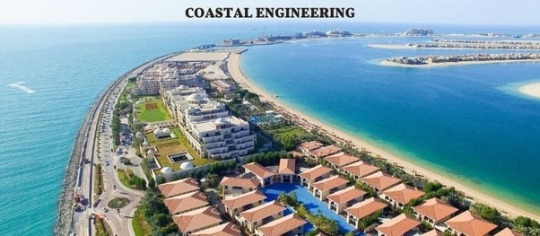
1.Scope:
Focused Scope- Coastal engineering focuses on the interface between land and sea, particularly in coastal and nearshore areas.
Shallow Water- Primarily concerned with shallow-water environments and coastal zones.
2. Key Areas of Study:
Coastal Protection- Designing structures like sea walls, groins, and breakwaters to protect against erosion and flooding.
Beach Nourishment- Adding sand to eroding beaches to maintain their width and protect coastal properties.
Harbor and Port Engineering- Designing and maintaining ports, harbours, and marinas for safe navigation and docking.
Hydrodynamics- Studying the movement of water in coastal areas, including tides, waves, and storm surges.
Sediment Transport- Understanding and managing the movement of sediment along coastlines.
3. Applications:
Flood Défense- Constructing levees and floodgates to protect coastal areas from storm surges and sea-level rise.
Erosion Control- Implementing measures to prevent coastal erosion and preserve beaches.
Habitat Restoration- Restoring natural coastal habitats such as wetlands and mangroves to enhance resilience and biodiversity.
Coastal Development- Planning and managing the development of coastal infrastructure and communities.
Marine and Coastal Engineering ensure the sustainable management of resources
Ocean Engineering deals with broader and deeper marine environments, focusing on offshore structures, renewable energy, underwater technology, and oceanography.
Coastal Engineering is more focused on the land-sea interface, addressing coastal protection, erosion control, harbor engineering, and sediment management.
Both fields are essential for sustainably managing and utilizing marine and coastal resources, but they apply different techniques and knowledge bases tailored to their specific environments.
0 notes
Text
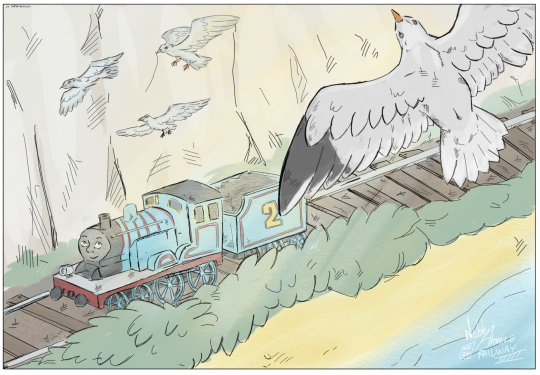
I still can't get over how many people liked the uncoloured version of this!
After much delay, enjoy a coloured Edward on a day out to the sunny seaside.
#The colours are as soft as he is#I think Edward is the fandoms fave#he is a joy to draw#thomas and friends#artists on tumblr#thomas the tank engine#ttte#nobleatomicsrailway#ttte fanart#ttte edward#edward ttte#edward the blue engine#edward#seagull#coastal railway#traintober2024#traintober 2024#traintober#ttte traintober
114 notes
·
View notes
Text

Tetrapod (structure)
“Tetrapods on Graciosa Island, Azores” - via Wikimedia Commons
#tetrapod#concrete#Wave-dissipating concrete block#breakwater#breakwater element#wikipedia#wikipedia pictures#wikimedia commons#engineering#erosion prevention#erosion#shoreline erosion#coastal#coastal shoreline#shoreline#photography
39 notes
·
View notes
Text
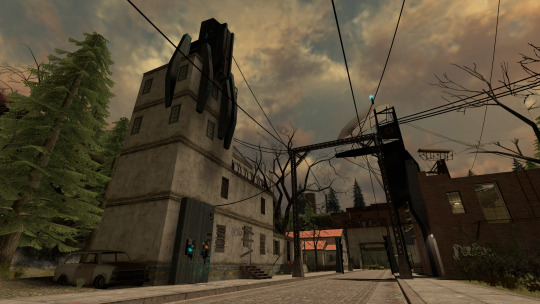

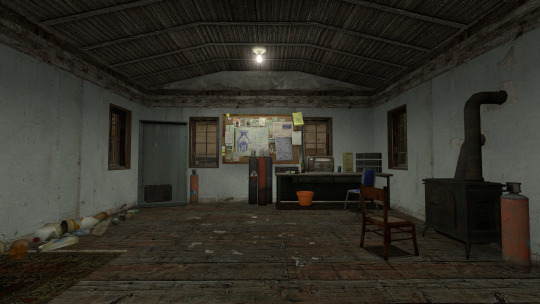

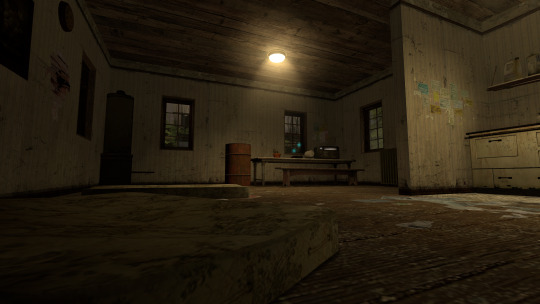
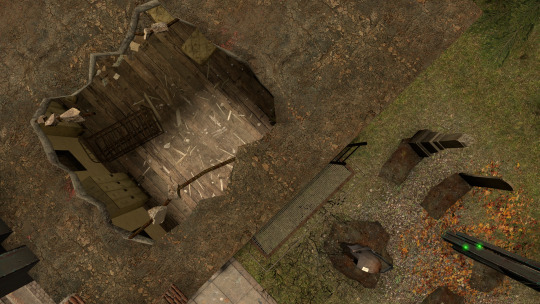
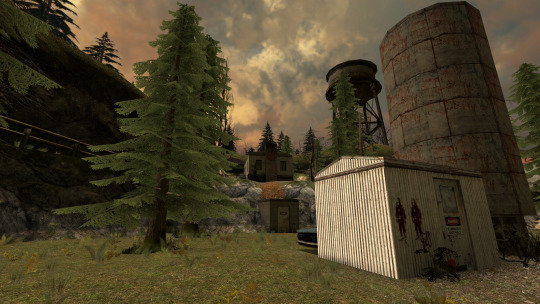
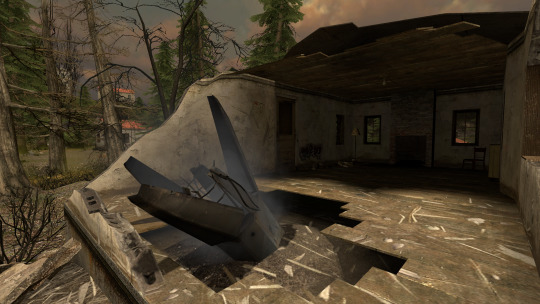
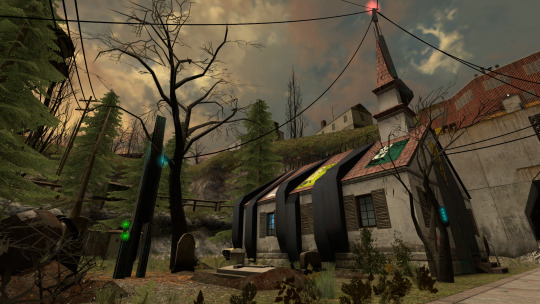

gm_pockyville
created by louie808
#garry's mod#gmod#half life 2#source engine#sandbox#hearted#we love a ravenholm/coastal & combine-occupied aesthetic don't we folks
68 notes
·
View notes
Text
Evinrude E-TEC 250: Best Outboard Engine for High-Speed Patrol Boats
Evinrude E-TEC 250: A Powerful and Efficient Outboard Engine for High-Speed Patrol Boats The Evinrude E-TEC 250 is a popular choice among boat owners and builders due to its impressive performance, reliability, and fuel efficiency. This outboard engine is particularly well-suited for high-speed patrol boats, offering a powerful and versatile powerplant for demanding maritime…
#best outboard for law enforcement#coastal patrol boat engines#Evinrude E-TEC 250#Evinrude engine specifications#fuel-efficient outboard#high-speed marine engines#low emissions outboard engine#marine engine technology#outboard engine for patrol boats#reliable boat motors
0 notes
Text
Geotextile Fabrics: The Ultimate Solution for Soil Stabilization & Erosion Control

Geotextile fabrics are a game-changer in modern construction and environmental projects. These permeable materials enhance soil stability, prevent erosion, and improve drainage systems. Used in road construction, landscaping, and coastal protection, geotextiles act as a protective layer, reducing soil displacement while allowing water to pass through. Whether you’re working on a large infrastructure project or a simple backyard improvement, choosing the right geotextile fabric ensures durability and longevity. Their versatility makes them ideal for filtration, separation, and reinforcement applications. With advancements in technology, geotextiles now come in various materials like woven, non-woven, and knitted fabrics to suit different needs. If you're looking for an eco-friendly and cost-effective way to improve ground stability, geotextile fabrics are your best bet. Learn how these innovative materials can enhance your next project while saving time and costs.
Why Geotextile Fabrics Are Essential for Road Construction and Drainage Systems?
Geotextile fabrics play a vital role in road construction and drainage management by preventing soil erosion and enhancing durability. These high-performance materials improve load distribution, ensuring roads last longer with minimal maintenance. In drainage applications, geotextiles act as filters, preventing soil particles from clogging drainage pipes while allowing water to flow freely. This not only enhances water management but also reduces infrastructure costs in the long run. Available in woven and non-woven types, geotextiles are tailored to meet different engineering needs. Contractors and engineers rely on them to build strong, stable foundations for highways, railways, and embankments. Whether you're working on a major construction project or need a reliable drainage solution, geotextile fabrics provide unmatched efficiency and sustainability. Investing in these fabrics ensures your structures remain resilient against natural forces, offering long-term benefits in infrastructure development.
Woven vs. Non-Woven Geotextile Fabrics: Which One Is Right for Your Project?
Choosing between woven and non-woven geotextile fabrics can significantly impact the success of your project. Woven geotextiles, made from strong synthetic fibers, are ideal for reinforcement and load-bearing applications, such as road construction and embankments. They provide excellent tensile strength, making them perfect for areas prone to heavy loads. On the other hand, non-woven geotextiles are designed for filtration, drainage, and erosion control. Their permeable structure allows water to pass through while preventing soil displacement, making them ideal for landscaping and drainage projects. Understanding the differences helps you select the right material based on your specific needs. Whether you need to reinforce a roadway or enhance water flow in a drainage system, using the correct geotextile fabric ensures durability and cost-effectiveness. Make an informed choice today and boost the efficiency of your construction or environmental project with the best geotextile solution.
The Environmental Benefits of Using Geotextile Fabrics in Construction
Geotextile fabrics not only improve construction efficiency but also offer significant environmental benefits. These eco-friendly materials reduce soil erosion, protect natural resources, and enhance water filtration. By stabilizing slopes and preventing sediment runoff, geotextiles help maintain ecological balance in construction zones. They also minimize the need for excessive concrete and other non-renewable materials, making them a sustainable choice for infrastructure projects. In agricultural applications, geotextiles promote healthy soil retention, improving crop yields while preventing land degradation. Additionally, their use in landfills ensures proper waste management by acting as a protective barrier between waste and groundwater. With growing concerns about climate change and environmental preservation, adopting geotextile solutions is a responsible choice for builders and engineers. Whether for roads, embankments, or drainage systems, geotextile fabrics contribute to a greener future while enhancing construction durability and efficiency.
How Geotextile Fabrics Enhance Strength and Longevity in Infrastructure Projects?
Geotextile fabrics play a crucial role in reinforcing infrastructure projects, providing superior strength and longevity. Used in roads, railways, and embankments, these fabrics prevent soil displacement and increase structural stability. Their high tensile strength allows them to withstand heavy loads, reducing maintenance costs and extending the lifespan of constructions. In water management projects, geotextiles act as effective filters, ensuring proper drainage and preventing sediment accumulation. This leads to improved flood control and soil conservation. By incorporating geotextile fabrics, engineers and contractors can enhance the durability of highways, bridges, and retaining walls. These materials are also resistant to chemicals and weather conditions, making them a reliable solution for long-term projects. Whether you're working on a small-scale development or a large infrastructure project, geotextile fabrics offer an economical and efficient way to strengthen foundations and improve overall construction performance.
Premium Geotextile Fabrics for Your Projects – Siraj Tech Limited
Looking for high-quality geotextile fabrics for your construction, landscaping, or drainage projects? Siraj Tech Limited offers a premium selection of geotextile solutions designed to enhance soil stability, erosion control, and drainage efficiency. Our woven and non-woven geotextiles are engineered for durability, making them ideal for roads, embankments, and environmental applications. With years of expertise in the industry, we provide cost-effective solutions tailored to meet your project requirements. Our products are made from top-grade materials, ensuring longevity and performance in even the most demanding conditions. At Siraj Tech Limited, we prioritize quality, reliability, and customer satisfaction. Whether you need bulk orders or specialized geotextile solutions, we are here to support your needs with expert guidance and competitive pricing. Contact us today to learn how our geotextile fabrics can enhance your next project and provide long-lasting benefits for your infrastructure needs.
Key Factors to Consider When Choosing Geotextile Fabrics for Your Project
Selecting the right geotextile fabric requires understanding key factors such as material type, permeability, and strength. Woven geotextiles offer superior reinforcement for heavy-load applications like road construction, while non-woven fabrics excel in drainage and filtration projects. Another important factor is UV resistance, which determines the longevity of the material in outdoor environments. Additionally, considering soil type and project conditions helps ensure optimal performance. High-quality geotextile fabrics prevent soil erosion, reduce maintenance costs, and enhance overall infrastructure durability. Whether for slope stabilization, landscaping, or flood control, using the correct geotextile ensures efficient water flow and soil retention. By evaluating load-bearing capacity, filtration needs, and environmental conditions, you can make an informed decision for long-term success. Investing in the right geotextile fabric not only improves construction efficiency but also contributes to sustainable and cost-effective project development.
#Geotextile products#Geo bags#Garden materials#Geo grow bags#Geosheets#Geotubes#Natural coir products#Tin shed house design#One-storey house design#Duplex house design#Three-storey house design#Factory design#Agro farm design#Industry shed design#Civil engineering tips#Geotextile applications#Home decor ideas#Agriculture tips#Geotextile manufacturers#Erosion control bags#Coastal protection bags#Geotextile sandbags#Flood protection bags#Geosynthetic bags#Soil reinforcement bags#Environmental sand containers#Shoreline stabilization bags#Landscaping supplies#Horticulture tools#Gardening accessories
0 notes
Photo

How Do Lighthouses Not Fall?
#lighthouse#lighthouses#architecture#engineering#coastal#maritime#safety#construction#stability#midjourney#ai
0 notes
Text
Tees Submarine Miners
I was browsing through some old maps of Middlesbrough and came across this wonderfully named building. The Tees Submarine Miners were a volunteer unit of the Royal Engineers. They were founded in November 1886 to man the fixed mines that were installed to defend the mouth of the Tees. The Tees unit was one of 9 set up to guard the major seaports of Britain. The other units were the Clyde,…
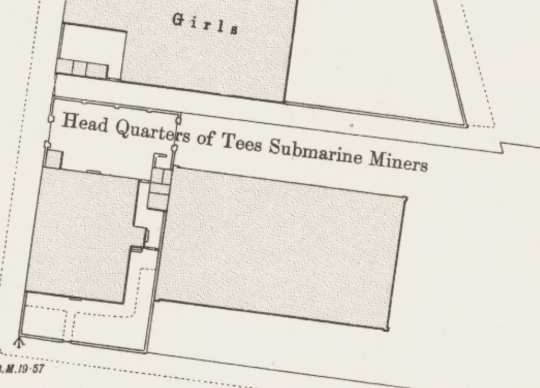
View On WordPress
0 notes
Text
Geobags in Civil Engineering: A Comprehensive Solution for Coastal Protection and Erosion Mitigation
Introduction: Coastal erosion poses a significant challenge to civil engineers worldwide, requiring innovative solutions that balance effectiveness, environmental sustainability, and cost efficiency. In recent years, geobags, a product of geotechnical engineering, have gained prominence as a versatile and resilient tool in the realm of coastal protection. This article explores the technical…

View On WordPress
#adaptability#civil engineering#coastal protection#community engagement#cost-effective construction#durability assessment#erosion control#geobags#hydraulic permeability#Resilient Infrastructure#sustainable solutions
0 notes
Text
Powering the Waves: Small Marine Engines Market Insights
The small marine engines market value will reach USD 11,696.1 million by 2030 from USD 7,967.5 million in 2022, at a 4.9% CAGR. This growth can be credited to the growing demand for numerous kinds of boats utilized for recreational and relaxation events, and the growing coastal tourism for water activities including yachting, boating, and fishing.
Furthermore, the leaning toward the water-based leisure industry has been on the surge because of the increased expenditure on water-associated activities by a chunk of the populace. Also, the sense of better-quality mental health because of the quality time spent during water-based activities is a main factor for the booming boating demand, which, ultimately, quickens the outward and inward-placed engines of marine vessels.
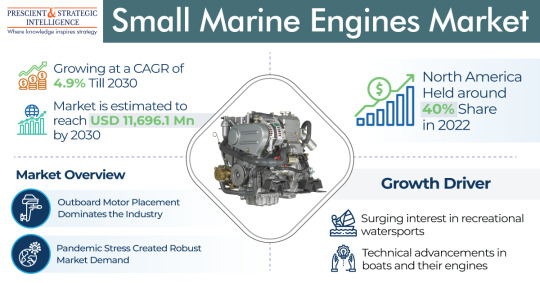
The mounted customer involvement in marine fun activities is offering worthwhile development opportunities for engine demand. In the past years, marine tourism and relaxation activities like yachting, power boating, and sailing, have experienced a significant surge, because of the growing disposable income of consumers. Moreover, rapid development in adventure tourism is helping water recreational activities.
As per a government-issued research article, above 50 million Americans went fishing, including artisanal fishing, commercial, and artisanal fishing, in 2021, which generated a profitable demand for outdoor or inner-placed motors in marine recreational vehicles. the recreational boats category, on the basis of the application segment, generated approximately USD 3.5 billion in revenue in 2022. And, a surge in demand for technically progressive fishing boats is projected to drive the development of the industry for engines and propulsion systems across the forecast period.
In 2022, the outboard motor category dominated the industry, and the category is also projected to advance at a CAGR of 5% in the coming years. This is mainly because of the technical advances, the requirement for outboard boats is projected to increase significantly in the coming few years.
#Small Marine Engines#Maritime Industry#Outboard Motors#Inboard Motors#Fuel Efficiency#Market Trends#Boating Enthusiasts#Lightweight Design#Global Market#Innovation#Recreational Boating#Commercial Vessels#Emerging Technologies#Environmental Impact#Regulatory Compliance#Power Output#Market Dynamics#Compact Engines#Coastal Tourism#Fishing Boats
0 notes
Text
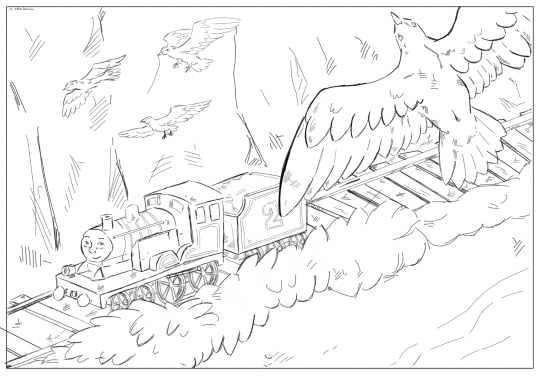
17. Seagull - Tornadoyoungiron's traintober list
<Prev | Next >
I love drawing Edward, he's such a peaceful character. Waiting on @axiondelta to colour this one so I'll upload this version in the meantime.
#thomas and friends#artists on tumblr#thomas the tank engine#ttte#nobleatomicsrailway#seagull#beach#edward the blue engine#edward ttte#ttte edward#edward#island of sodor#coastal railway#this just looks so serene#traintober2024#traintober#traintober 2024
99 notes
·
View notes
Text

Oxfam condemns in the strongest terms the killing in Gaza today of four water engineers and workers from the Khuzaa municipality who were working with our strategic partner the Coastal Municipalities Water Utility (CMWU). The four men were killed on their way to conduct repairs to water infrastructure in Khuzaa, east of Khan Younis. Despite prior coordination with Israeli authorities their clearly-marked vehicle was bombed. Oxfam stands in solidarity with the CMWU, their partners and the families of the victims. Their deaths deepen the catastrophic humanitarian crisis in Gaza where access to clean water is already severely compromised. Dozens of engineers, civil servants and humanitarian workers have been killed in Israeli airstrikes throughout this war. They were all working on essential services to keep Gaza's fragile infrastructure running. Despite their movements being coordinated with the Israeli authorities by the CMWU and the Palestinian Water Authority, to ensure their safety, they were still targeted. Attacks on civilian infrastructure and those who maintain it are clear violations of international humanitarian law. Those responsible must be held to account. Such attacks are part of the crime of using starvation as a weapon of war.
#yemen#jerusalem#tel aviv#current events#palestine#free palestine#gaza#free gaza#news on gaza#palestine news#news update#war news#war on gaza#gaza genocide#genocide#war crimes#famine
2K notes
·
View notes
Text
🧃 How to Develop a Vibe AND a Plot (aesthetic doesn’t cancel arcs. let’s balance them.)
hey you. yes, you. the one with the moody playlists, the 73-tab Pinterest board, and a half-written draft that just keeps…vibing in circles.
if you’ve ever written 10k of immaculate vibes but couldn’t tell anyone what your story is about, this post is for you. because here’s the thing: ✨ aesthetic is not a substitute for stakes. ✨
let’s talk about how to keep your ✨vibes✨ and actually have a plot that moves. no ✧ fluff ✧ just structure, character arcs, and some lovingly blunt advice from your local writeblr gremlin (me).
🌊 1. aesthetic is a result, not a premise
the most common mistake i see is starting with a vibe as the story. like:
“sad girls on the beach in 1996”
“a cursed forest full of dead gods”
“a pastel academic rivalry with secrets and sexual tension”
cool. great. love that for you. but… what’s the story? what’s happening?
✨vibes = setting + mood + tone. ✨plot = choices + consequences + change.
your aesthetic can inspire the story (please keep making playlists. i love them). but don’t confuse the feel of your world with the function of your plot. start with tension. stakes. character flaws. emotional damage. that’s the engine. the aesthetic is the paint job.
🎯 2. define your “emotional throughline”
okay, so you’ve got an aesthetic. what’s the emotional core of it? your plot should orbit a single emotional question, like:
will this character ever let themselves be known?
what does it take to unlearn loyalty?
is love worth destroying something sacred?
start with that. then attach aesthetic scenes to it.
🧩 pro tip: aesthetic scenes are more powerful when they contradict or complicate your emotional throughline.
ex: your story’s about loneliness? show them at the loudest, busiest party. story’s about grief? show them smiling in photos while everything breaks behind the lens.
aesthetic is stronger with irony. contrast. juxtapositions. don’t just bathe the reader in vibes. weaponize them.
💥 3. let your aesthetic hurt your characters
whatever your aesthetic is--soft academia, vaporwave horror, regency witchcore, don’t make it just a backdrop. make it an obstacle.
your setting should create problems. friction. conflict.
if it’s a sleepy coastal town: what’s festering beneath the quiet?
if it’s a hauntingly beautiful forest: what does it take from people?
if it’s a cursed mansion: what happens to the girls who stay too long?
every time you design a pretty place or moody visual, ask: ❓ how does this setting test my characters’ beliefs or desires?
because then your aesthetic drives the story forward instead of just decorating it.
📚 4. develop plot like a playlist: structure the escalation
your aesthetic playlist has structure, right? (don’t lie. i know you’ve got a specific song for act 3 heartbreak.)
plot works the same way. it’s not a mystery. it’s escalation.
you want a structure? here’s a dead-simple one:
give your main character a desire (internal & external)
give them a reason they can’t have it (flaw, fear, lie)
make them try anyway (rising stakes)
make it cost them something (midpoint shift)
force them to change or break (climax)
let that change play out (falling action / resolution)
that’s it. apply that structure to your vibey little story and suddenly it’s a book.
👁🗨 5. plot is what they do - vibe is how it feels
don’t choose one. you can have both.
you can have a soft lighting scene on a rooftop and the secret betrayal reveal. you can have dreamy prose and broken character dynamics. you can give me worldbuilding so lush it smells like petrichor and rot and still give me a plot twist that leaves me feral.
you just need to be intentional.
every scene = a purpose. every aesthetic = an angle. every image = tied to stakes, desire, or change.
✨ that’s the difference between “ooh pretty” and “oh my god i can’t stop thinking about this story.” ✨
💌 so in conclusion:
start with an emotional arc
let your aesthetic scenes earn their place
make your world fight your characters
escalate, escalate, escalate
and stop hiding a lack of plot under “vibe” like a glittery throw blanket over a broken chair
you’ve got this. now go write the beautifully messy, aesthetic and emotionally devastating story you were meant to.
i believe in you.
🧃rin t.
P.S. I made a free mini eBook about the 5 biggest mistakes writers make in the first 10 pages 👀 you can grab it here for FREE:
#writeblr#writingtips#writingadvice#aestheticwriting#plotandvibe#writecommunity#fictionwriting#storystructure#thewriteadviceforwriters#writing advice#writing help#how to start a novel#writing tips#writers on tumblr#amwriting#creative writing#writing resources#writeblr community#on writing#writing#writers block#how to write#writers and poets#novel writing#fiction writing#romance writing#writing blog#writing characters#writing community#writing ideas
760 notes
·
View notes
Text
Almanara Castle, Historical Landmark in Tatrosa | Museum and Wedding Venue (NO CC)

The Almanara Castle (Also known as "Almanara Al-Tartos", or "Alcazar of Tartosa")
Almanara Castle, once part of the grand Qasr Al-Zayl al-Tartos, was the last refuge of Emir Jabar Al-Tartozi II before the fall of the Emirate of Tartosa in 1497. Spared after the siege, it later became a royal villa and was declared a cultural heritage site in 1876. Now a museum and wedding venue, Almanara offers a glimpse into Tartosa’s past with stunning coastal views.
Lesmana Enterprise led the restoration efforts after the 2021 Tartosa earthquake which damaged the castle, restoring it to its former glory.

The Last of its Kind in Tartosa
This picturesque castle was built in the late 14th century during the early years of the Tartosan Emirate rule by Al-Simhara sulanate engineers.
Its arabesque-moorish architecture is a reminder of a much more different, by-gone era of Tartosa's deep history.


Well Preserved, As if it was Built Yesterday
Our team of highly skilled engineers, historians, craftspeople, and archeologists ensures that the Almanara Castle retains its charm for centuries to come.
From intricate archway designs, geometric tileworks, centuries-old plasters, to water features that had worked for the past 600 years without the use of eletricity, we made sure visitors would experience Almanara Castle the way the Emirs of Tartosa and his royal court had experienced it centuries ago.


The Hall of Jenane
During the rule of Emir Hamid I (AD 1401-1429), Almanara Castle was repurposed as a private quarter of his daughter Amirah Jenane Al-Munr, who added more geometric tilework to the castle, adorned in her favorite azure and tosca colors to every edge of the estate.
In 1415, Amirah Jenane had her wedding in this very hall, where dignitaries from neighboring kingdoms like Kingdom of Windenburg, Grand Duchy of Champ-les-sims, and even norther simlandic kingdoms were invited to attend.
Today, the hall of Jenane becomes an exhibition hall that displays the collections of Amirah Jenane, where centuries-old potteries from different parts of the world can be seen, showing the Amirah's love for future generations who visits the castle.
Also, just like Amirah Jenane, you can experience becoming an Emirate royal by having your wedding in this hall too, by arranging the dates from the Museum's website.



The Emir's Exhibition



On the second floor of the main keep, you can find an exhibition of the Emir Jabar II's personal belongings such as weapons, books, and tapestries.
Pieces like the Emir's silver sword crafted by a Ravenwood master blacksmith, or the Emir's Gunpowder-powered broom crafted by a Glimmerbrook 15th century famed gunsmith-warlock is diplayed in this room.


The Azure Sanctum
In the castle's subterrane, is a breathtaking hall called the "Azure Sanctum", a hall with and endless arrangement of pillars and arches adorned in the finest lazuardi tiles and gemstones, with a fountain that had been running for centuries without the help of electricity.
According to historians' records, the Azure Sanctum used to be a place where the Royals would lounge during the hot Tartosan summer, as this room is proven to be -5 to -7 degrees celcius cooler than the air outside.
Now, the Azure sanctum serves as an exhibition hall for wall decorations and the famed "Scales of righteousness", a golden scale used widely in the Tartosan Emirate's Al-Simharan justice system in the medieval era.
Technical Informations
Packs used


Location
Place Almanara Castle here.

Download via SFS
Almanara Castle (MUSEUM) : Download
Almanara Castle (WEDDING VENUE) : Download
Follow below post to learn more of Almanara Castle's History!.
Sul Sul!,
Lesmana Enteprise Co., Ltd.
#simblr#lesmana-enterprise-ltd#sims 4#sims 4 aesthetic#sims 4 screenshots#ts4 simblr#sims 4 no cc#sims 4 build#showusyourbuilds#sims 4 build download#download#sims 4 castle#castle#arab#tartosa#sims 4 museum#sims 4 wedding#sims 4 medieval#sims 4 decades challenge#sims 4 royal simblr#sims 4 cc#sims 4 royal family#sims 4 royalty#sims 4 royal legacy
776 notes
·
View notes